|
By skyhunter - 4 Years Ago
|
So I have a PCV set up on my 292. The PCV valve is on the rear of the valley pan and feeds back into the intake. The fresh air goes from the air cleaner base to the oil fill cap but it is the open element type with perforations under it and a hose connector.
I am getting oil up under my hood near the hinge from it. Should I have a closed cap with just the hose attachment.
Should the other valve cover be vented some how? They are the finned Spotlite Customs finned covers.
What did I done do wrong?
Thanks.
|
|
By KULTULZ - 4 Years Ago
|
Any chance of photo(s) showing the install?
|
|
By 2721955meteor - 4 Years Ago
|
the breather at the filler tube should not have a vacuum source. with a pcv creating a vacuum in the valley restricts oil return to the sump. in my case I have no spill tubes on rocker shafts so lots of oil I found I had to remove the pcv valve, routed the hose into th air cleaner carb side of air cleaner.
my take is Ys wher never intended to have blow by taken into the intake, or fitting in carb base. I think if the spill tubes are left in the rockers you could get away. my opinion is lots of oil too the rockers as well as valve train makes for longer life esp camshaft and valve train
|
|
By KULTULZ - 4 Years Ago
|
|
Should I have a closed cap with just the hose attachment.
Yes, closed filler cap with fresh air intake tube to ACL.
Should the other valve cover be vented some how?
Not needed.
The fresh air source will not affect the internal baffling and ventilation of the crankcase if there is no blow-by..
Would still like to see photo(s) of the install. Most are not done correctly (IMO).
|
|
By 2721955meteor - 4 Years Ago
|
KULTULZ (6/20/2021)
Should I have a closed cap with just the hose attachment.
Yes, closed filler cap with fresh air intake tube to ACL.
Should the other valve cover be vented some how?
Not needed.
The fresh air source will not affect the internal baffling and ventilation of the crankcase if there is no blow-by..
Would still like to see photo(s) of the install. Most are not done correctly (IMO).
never saw a engine gas or diesel that has no blow by .the cap over the oil fill tub is a breather and should be serviced at oil changes .the road draft setup worked well, tho original y set up was ok but prone to external leaks as the cover being over tined stretched the poor ly designed.
|
|
By KULTULZ - 4 Years Ago
|
| never saw a engine gas or diesel that has no blow by .the cap over the oil fill tub is a breather and should be serviced at oil changes .the road draft setup worked well, tho original y set up was ok but prone to external leaks as the cover being over tined stretched the poor ly designed. | | | |
The OP is describing a CLOSED PCV SYSTEM whereas fresh air for crankcase ventilation is drawn through the carb air cleaner instead of a vented/filtered oil fill cap (OPEN PCV SYSTEM). It first appeared 1963/64. Surely you have seen such a system. Amount of blow-by vented is as a result of engine condition and/or crankcase ventilation system integrity.
|
|
By skyhunter - 4 Years Ago
|
I will take pictures when I get it back from Intercity Transportation.
|
|
By 2721955meteor - 4 Years Ago
|
yes I have seen the system you note, but never one a y block. fes where equipped so. Hear in canada ys wher no longer in cars. trucks only and had road draft from the rear of the valley, with filler caps as air intake. also the ys in trucks wher notorious for loosing oil pressure on down hill or heavy braking, due to the oilpan.with no bafels
would be interested to see a photo of y with positive crank ventilation as Oem installation.
have witnessed a sb ford with valve cover filler taped off and total bottom end failure do to oil not returning to base fast enough due to vacuum build up in valve covers.
ENOUGH SEAD FROM ME AND WE CAN AGREE TO DISAGREE
|
|
By KULTULZ - 4 Years Ago
|
... hmm ... (must have forgotten the words to the song) ... anyway ...
OP Posted -
So I have a PCV set up on my 292. The PCV valve is on the rear of the valley pan and feeds back into the intake. The fresh air goes from the air cleaner base to the oil fill cap but it is the open element type with perforations under it and a hose connector.
I am getting oil up under my hood near the hinge from it. Should I have a closed cap with just the hose attachment.
He doesn't mention year/model. 1961/ came through with PCV SYSTEM.
I was a$$-u-me(ing) that he was referring to a retrofit.
There is no argument, either it is or isn't ... (much akin to my sex life).
|
|
By patm - 4 Years Ago
|
Is the PCV installed correctly, facing the correct way, vacuum input on the correct end of the valve?
Pat in AZ
|
|
By DryLakesRacer - 4 Years Ago
|
I installed a PCV system on my 56 292. I documented it here. I used a 61-64 valley cover with a fitting on the opening with a 1/2 tube nipple attached. The PCV valve was one I purchased off the net which screwed into a 90* fitting at the rear of the carb base originally for a 1961 Mercury. Since I have dual quads it mounts between the 2 carbs. A V100 valve is available today and works perfectly.If your system works properly the oil fill tube should be able to hold a piece of paper to it when the engine is idling. If you can put a vacuum gauge on your oil fill it should read between 1 and 3 inches of vacuum. Mine was slightly over 1 thru the dip stick hole and sealing off the oil fill tube. This was good so I added a rubber seal on the dip stick. I then decided to NOT have unfiltered air enter my engine thru the oil fill tube breather I bought a cap with a 1/2” nipple attached and made it feed from inside of the air cleaner on the filtered side. I’m including a photo of that fitting holding a piece of paper while the engine is idling; you can also see in the photo the style of oil fill cap and the hose, This is exactly how the factory still designs and installs PCV systems today. The white fitting was turned around after this photo was taken. My engine no longer smells when I pull into my garage and the oil leak at the rear of my engine has been drastically reduced. I am not sure why a PCV valve located at the rear in the valley cover would suck oil unless it did not have deflector plate like the Thunderbirds or 61-up cars and trucks. Ted Eaton has showed a PCV valve placed there and never mentioned it sucked in oil. 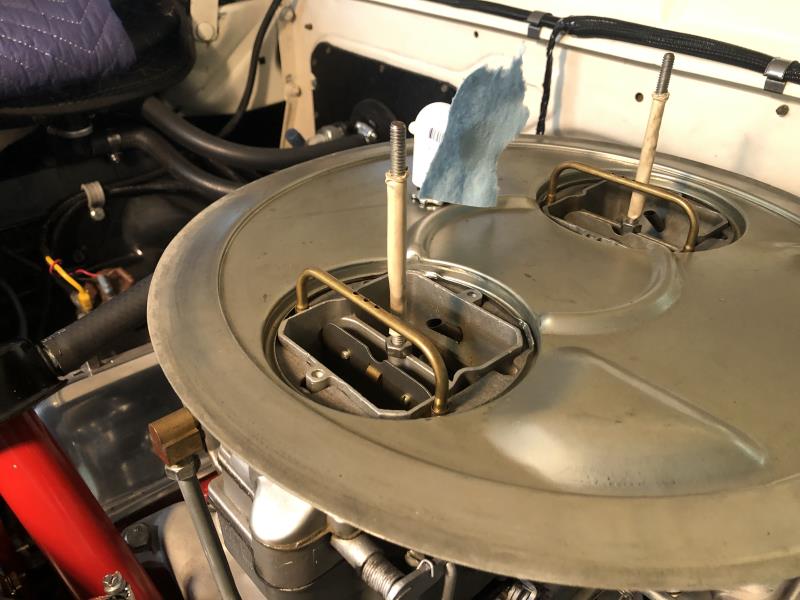 |
|
By KULTULZ - 4 Years Ago
|
Attach your vacuum gauge to the dipstick tube to take the draft reading.
|
|
By PF Arcand - 4 Years Ago
|
Lot of clarity issues with this question.. One that occurs to me is the PCV mount in the valley pan. Is it by chance a std Valley pan that was used with a Block side draft tube setup originally? If so, it wouldn't have any kind of oil deflector originally.. Or was the deflector underneath removed when the rear type road draft tube was taken off ??. PCV setups can tend to draw oil in some cases...
|
|
By KULTULZ - 4 Years Ago
|
|
Lot of clarity issues with this question.. One that occurs to me is the PCV mount in the valley pan. Is it by chance a std Valley pan that was used with a Block side draft tube setup originally? If so, it wouldn't have any kind of oil deflector originally.. Or was the deflector underneath removed when the rear type road draft tube was taken off ??. PCV setups can tend to draw oil in some cases...
Paul
No, the 1954/57 pan used with the block mounted road draft had only one baffle, the front one. It was designed to force incoming fresh air onto the top of the cylinder heads to ventilate that part of the engine. This design was modified in 1955 BIRD only as it used a pan mounted road draft tube, FORD followed in 1958 (or the 57 E-CODE).
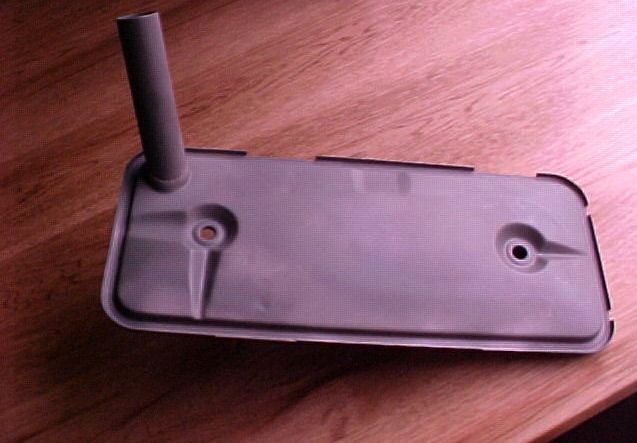
EDIT -
FORD went to the valley pan mounted draft tube (FYB) in the 1958 model year.
EDIT of a previous EDIT - (you can do that)
FORD first used the pan mounted draft tube on the 1955/57 BIRD and 1957 FORD E & F CODES.
1958 saw the full use of the pan mounted system (PASS CAR).
|
|
By DryLakesRacer - 4 Years Ago
|
|
Drilling a hole in that valley cover, adding a grommet for the PCV valve without welding in a defector/ baffle under it would defiantly cause oil suck into the intake. There is a rubber grommet used on aftermarket rocker covers, normally SBC’s, will really help. I installed one on a friends sons engine 20 years ago with success. The rocker cover did not have a baffle.
|
|
By skyhunter - 4 Years Ago
|
Sorry, still waiting on the vehicles.
Some further info. The valley cover is an aluminum one with a breather hole and baffled rear breather box from John Mummert.
The PCV valve is one that fits the 289, 302, 351 engines.
The 292 is a rebuild long block so no PCV or draft tube came with it.
|
|
By KULTULZ - 4 Years Ago
|
|
The valley cover is an aluminum one with a breather hole and baffled rear breather box from John Mummert.
Shown is a BLUE THUNDER. Is it anything alike?
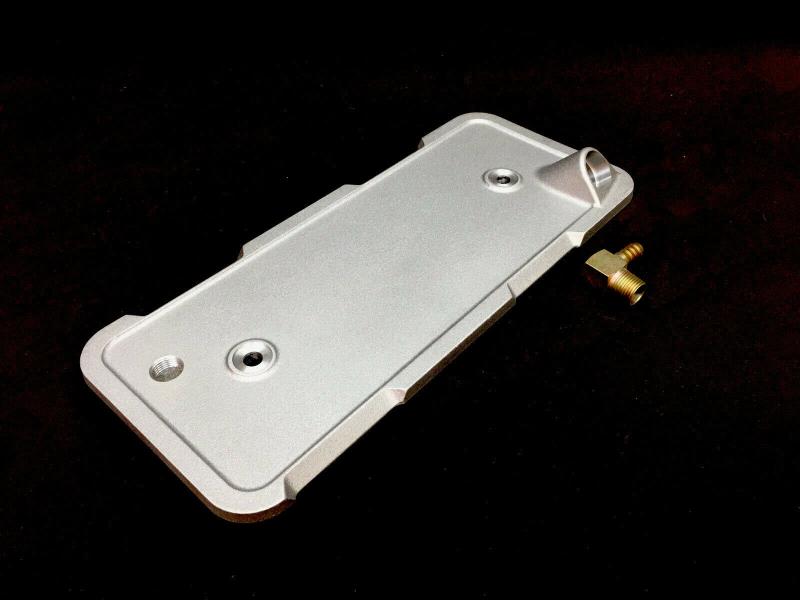
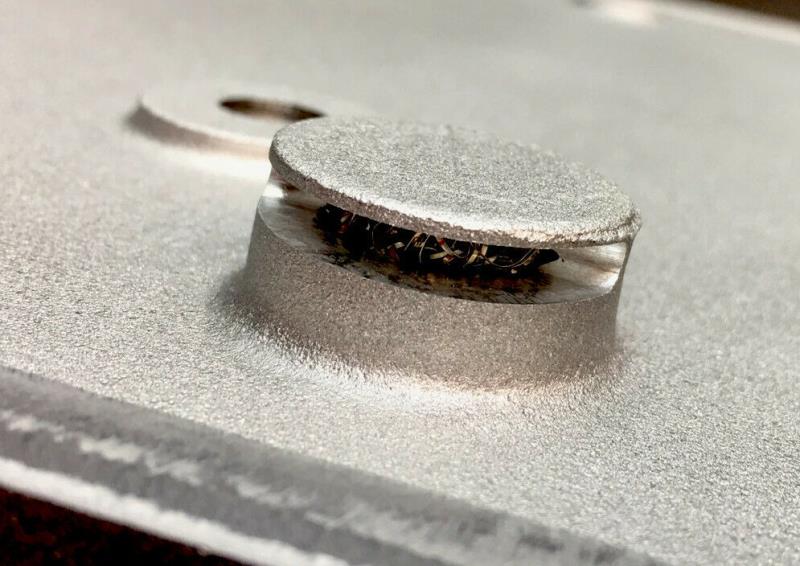
|
|
By Ted - 4 Years Ago
|
KULTULZ (6/26/2021)
The valley cover is an aluminum one with a breather hole and baffled rear breather box from John Mummert.
Shown is a BLUE THUNDER. Is it anything alike?
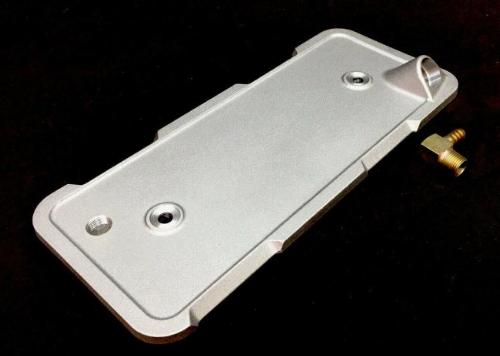
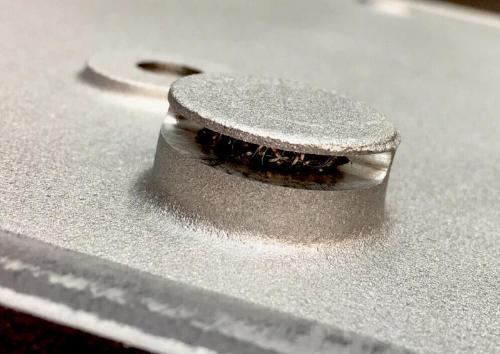
Here are pictures of the Mummert aluminum valley cover for comparison purposes.
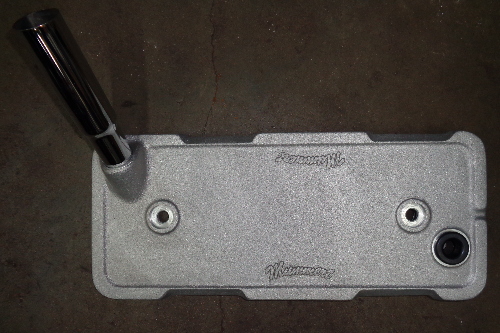
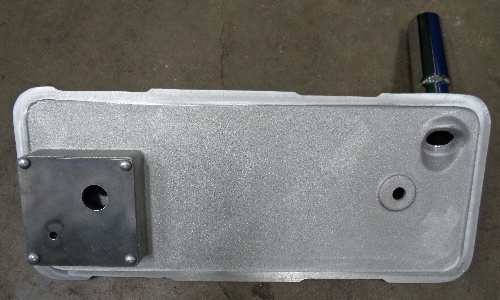
|
|
By Daniel Jessup - 4 Years Ago
|
On a related note, but probably one that leans towards performance - Ted, can you explain a little about what looked to be an "exhaust vacuum" set up that you had on your Y Block in the altered T bucket? I do wonder if there is any benefit to a street car adapting this kind of configuration to help scavenge the block of blowby... As I recall you had this setup on both headers and there was a line that ran to a baffled cap at the rear of each valve cover?
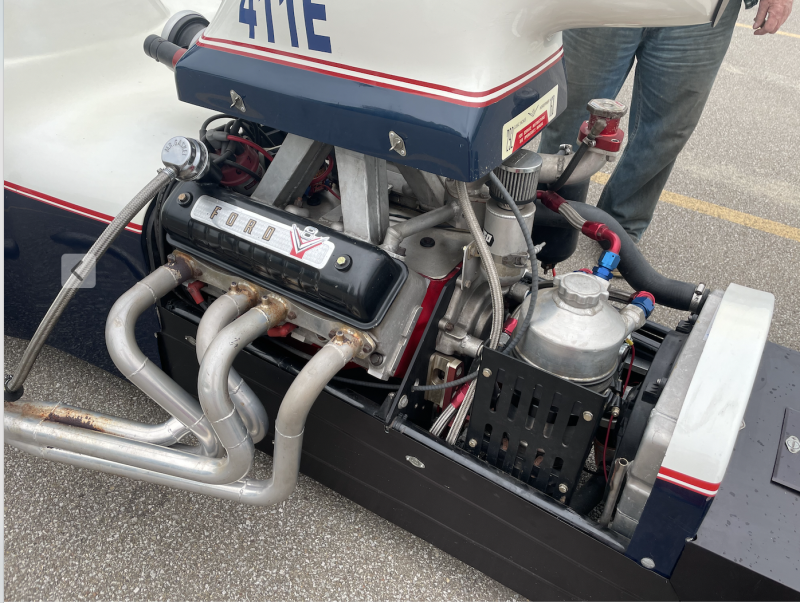
|
|
By Ted - 4 Years Ago
|
|
Daniel Jessup (6/26/2021)
On a related note, but probably one that leans towards performance - Ted, can you explain a little about what looked to be an "exhaust vacuum" set up that you had on your Y Block in the altered T bucket? I do wonder if there is any benefit to a street car adapting this kind of configuration to help scavenge the block of blowby... As I recall you had this setup on both headers and there was a line that ran to a baffled cap at the rear of each valve cover?
That’s a crankcase evacuation system which is powered by exhaust flow in the header collector. In lieu of using a four or five stage dry sump oil pump, I’m using the exhaust the help draw a vacuum on the crankcase. My roadster is only using a three stage oil pump and that does not generate adequate negative pressure to aid in the performance. The crankcase is physically sealed up so there is no air movement into the engine thus aiding the removal of whatever air is present there. There is a check valve on each header to keep any positive exhaust pressure out of the crankcase which could happen at low rpm without the check valves. With all that being said, these systems work well on race cars where there is no back pressure in the exhaust being present.
You don’t see the exhaust evacuation systems on street cars due to an accumulation of oil building up in the mufflers, insufficient vacuum being generated either from the rpm being too low, and/or back pressure in the exhaust system preventing a vacuum from being generated. Engine oil making its way through the exhaust side check valves and slowly stopping up the mufflers would be at the top of the list for why these systems are not used on street cars.
|
|
By skyhunter - 4 Years Ago
|
 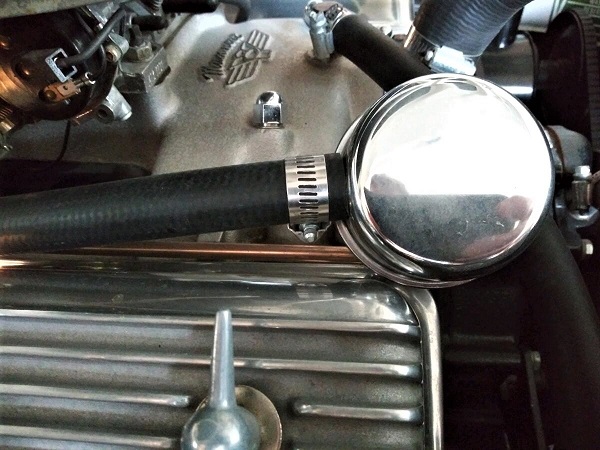 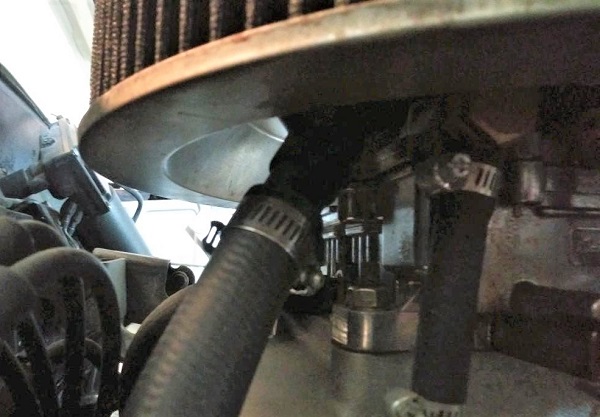 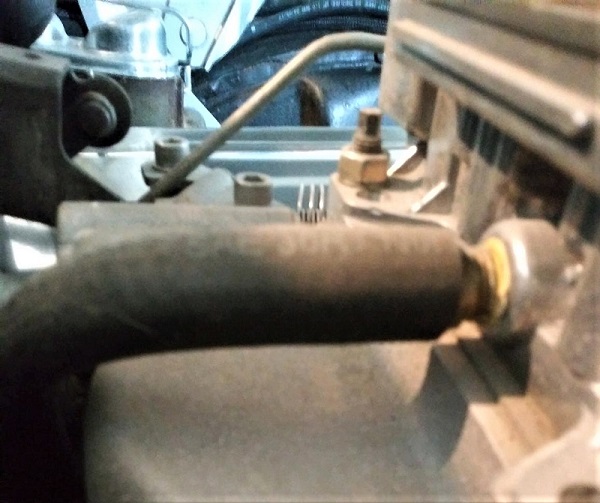
|
|
By skyhunter - 4 Years Ago
|
So it's PCV from back of valley cover to back of Carb.
Base of Air Cleaner cover to Oil Fill Cap.
|
|
By DryLakesRacer - 4 Years Ago
|
|
If you have a vacuum on the hose going into the air cleaner or on the oil fill tube (enough to hold a piece of paper) you should be fine. Remember your looking for 1” of vacuum. Is your side block breather blocked off? Looks good to me as long as the is a oil deflector under the valley cover..
|
|
By DryLakesRacer - 4 Years Ago
|
|
With an open breather cap there wont be any vacuum. Do it at the oil fill tube first. Like I said I added a leather washer I made to seal odd the dip stick. gates for a 64-67 Thunderbird and Mustangs with California emissions …..and a gates 31070 for later GMC 3500 pickups work. Stant lists them too. Try Rock Auto for numbers. I had to paint mile black. But there are chrome ones and several other ones with a Fordoval embossed in.
|